Explore null | Canon Latin America

EOS Rebel T3
- EOS Rebel T3 Camera Body
- Optional: EF-S 18-55mm f/3.5-5.6 IS Type II Lens
- Eyecup Ef (not shown)
- Wide Strap EW-200DB
- Interface Cable IFC-130U
- Battery Pack LP-E10
- Battery Charger LC-E10
- EOS Digital Solution Disk and Instruction Manuals "Great Photography is Easy" Booklet and "Do More with Macro" Booklet (not shown)
-
OVERVIEW
-
SPECIFICATIONS
-
ACCESSORIES
-
RESOURCES
-
SUPPORT
-
MISCELLANEOUS
The Beauty of Simplicity.













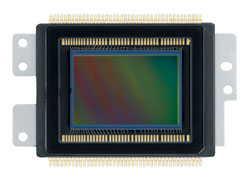
12.2 Megapixel APS-C Size CMOS Sensor
DIGIC 4 Image Processor
The improved DIGIC 4 Image Processor ensures that images are captured, processed and saved with remarkable speed. The EOS Rebel T3 DSLR's new 3:2 multiple aspect ratio, in-camera RAW image processing, creative filters, image resizing and provided S2 and S3 image-recording quality are all possible thanks to the DIGIC 4 Image Processor. With dazzling results, the new DIGIC 4 Image Processor also works to capture and process data of images shot at 12.2 Megapixels at 3.0 fps, as well as 14-bit signal processing for excellent image gradation, enhanced Face Detection Live mode, Full HD video recording, Auto Lighting Optimizer and Lens Peripheral Optimization.

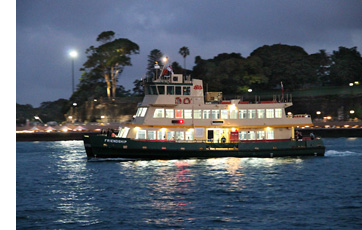
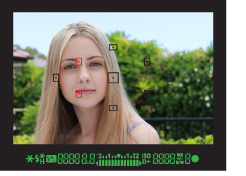
9-point AF
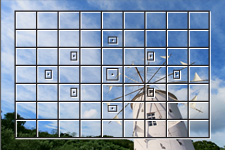
Metering zones

3.0 fps Continuous Shooting
Live View Function
Live View Function enables you to view your subjects directly on the huge 2.7-inch LCD monitor. It's easy to magnify any part of the scene 5x or 10x for precise manual focus. And now, there are two ways to use Autofocus along with Live View Function in the EOS Rebel T3. You can even choose a grid overlay, perfect for keeping straight lines in your subject straight in your pictures. In the studio, Live View Function can be used remotely via a computer through the EOS Rebel T3 DSLR's USB connection.

Shoot by ambience selection:
Based on the Picture Style and its parameters (sharpness, contrast, saturation, and color tone), the exposure compensation and white balance correction are adjusted to attain the selected ambience. You can also select the strength of the ambience effect.
Shoot by lighting or scene type:
Although the actual parameter set is the white balance, the settings are expressed in more understandable terms.
The EOS Rebel T3 DSLR's Quick Control screen gives you instant access to the most common settings, all in one place! It's a great way to quickly confirm or change settings while you're shooting. The Quick Control screen is particularly useful when you're shooting from a tripod or monopod, with the camera at eye level, because it eliminates the need to view the LCD data panel on top of the camera while changing settings.
For beginners looking to expand their photographic horizons, the EOS Rebel T3 offers Creative Auto mode. While basic settings are based on full automatic operation, shooting guides on the LCD screen enable you to make corrections based on simple to follow guidelines. In essence, with Creative Auto mode, you can learn about photography while taking stunning photographs.
Additionally, the EOS Rebel T3 is compatible with Eye-Fi* SD cards, which are outfitted with a Wi-Fi transmitter (IEEE 802.11b/g) and internal antenna for wireless, high-speed transfer of images. With an Eye-Fi card installed, the EOS Rebel T3 can display the Eye-Fi's connection status and error notes with ease, for fully functional wireless uploading of images directly from the camera.
*Canon cameras are not guaranteed to support Eye-Fi card functions, including wireless transfer. In case of an issue with the Eye-Fi card, please consult with the card manufacturer. The use of Eye-Fi cards may not be available outside the United States and Canada; please contact the card manufacturer for territory availability.
The EOS Rebel T3 is compatible with all Canon lenses in the EF and EF-S lineup, ranging from ultra-wide angle to super telephoto lenses. Canon lenses employ advanced optical expertise and micron-precision engineering to deliver unprecedented performance in all facets of the photographic process. Special optical technologies, such as Aspherical, ultra-low dispersion, or fluorite elements are featured in the universally acclaimed L Series lenses, and Canon's Optical Image Stabilizer technology are featured in select lenses to minimize the effect of camera shake. Through Canon lenses, photographers can truly maximize the quality and liberating performance of the EOS Rebel T3.
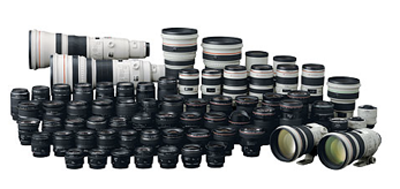
| Type | Digital, AF/AE Single-Lens Reflex, Camera With Built-In Flash |
| Recording Medium | SD/SDHC/SDXC Card, Via External Media (USB V.2.0 Hard Drive, Or Via Wireless LAN (Eye-Fi Card*)) *Canon Cameras Are Not Guaranteed To Support Eye-Fi Card Functions, Including Wireless Transfer. In Case Of An Issue With The Eye-Fi Card, Please Consult With The Card Manufacturer. The Use Of Eye-Fi Cards May Not Be Approved In All Regions, Or From One Region To Another; Please Contact The Card Manufacturer For Status Of Approval In The Country/Region Of Use. |
| Image Format | Approx. 22.0 Mm X 14.7 Mm |
| Compatible Lenses | Canon EF Lenses Including EF-S Lenses (35mm-Equivalent Focal Length Is Approx.1.6x The Lens Focal Length) |
| Lens Mount | Canon EF Mount |
| Type | High-Sensitivity, High-Resolution, Large Single-Plate CMOS Sensor |
| Pixels | Effective Pixels: Approx. 12.20 Megapixels |
| Total Pixels | Total Pixels: Approx. 12.60 Megapixels |
| Aspect Ratio | 3:2 (Horizontal : Vertical) |
| Color Filter System | RGB Primary Color Filters |
| Low Pass Filter | Fixed Position In Front Of The CMOS Sensor
|
| Dust Deletion Feature | (1) Manual Cleaning (2) Dust Delete Data Acquisition And Appending
|
| Recording Format | Design Rule For Camera File System 2.0 And Exif 2.30 |
| File Size | (1) Large: Approx. 12.20 Megapixels (4272 X 2848) (2) Medium: Approx. 6.30 Megapixels (3088 X 2056) (3) Small: Approx. 3.40 Megapixels (2256 X 1504) (4) S2: Approx. 2.50 Megapixels (1920 X 1280) (5) S3: Approx. 0.35 Megapixels (720 X 480) (6) RAW: Approx. 12.20 Megapixels (4272 X 2848) Exact File Sizes Depend On The Subject, ISO Speed, Picture Style, Etc. |
| Recording Functions | Images Record Directly To The SD Card. Creating New Folders And Selecting Folders In The Card Possible. |
| File Numbering | Consecutive Numbering, Auto Reset, Manual Reset. |
| Raw Jpeg Simultaneous Recording | Provided (RAW + JPEG) |
| Color Space | SRGB, Adobe RGB |
| Picture Style | Standard, Portrait, Landscape, Neutral, Faithful, Monochrome, User Defined 1-3 |
| Settings | Auto, Daylight, Shade, Cloudy, Tungsten Light, White Fluorescent Light, Flash, Custom (Custom WB) |
| Auto White Balance | Auto White Balance With The Image Sensor |
| Color Temperature Compensation | White Balance Correction: &Plusmn;9 Levels White Balance Bracketing: &Plusmn;3 Levels In Single-Level Increments Blue/Amber Direction Or Magenta/Green Direction Possible |
| Color Temperature Information Transmission | Provided |
| Type | Eye-Level SLR (With Fixed Pentamirror) |
| Coverage | Vertical/Horizontal Approx. 95% (TD) |
| Magnification | Approx. 0.8x / 22.4&Deg; (With 50mm Lens At Infinity, -1 M-1 (Dpt)) |
| Eyepoint | Approx. 21 Mm (At -1m-1 From The Eyepiece Lens Center) |
| Dioptric Adjustment Correction | Adjustable From Approx. -2.5 To +0.5 M-1 (Dpt) |
| Focusing Screen | Fixed |
| Mirror | Quick-Return Half Mirror (Transmittance: Reflectance Ratio Of 40:60) |
| Viewfinder Information | 1) AF Information (AF Points, Focus Confirmation Light) 2) Exposure Information (Shutter Speed, Aperture, ISO Speed, AE Lock, Exposure Level, Exposure Warning) 3) Flash Information (Flash Ready, Flash Exposure Compensation, High-Speed Sync, FE Lock, Red-Eye Reduction Light) 4) Image Information (Highlight Tone Priority, Monochrome Shooting, Maximum Burst, White Balance Correction, SD Card Information) |
| Depth Of Field Preview | No Depth-Of-Field Preview Button (Enabled With C.Fn-8-5 And Pressing SET) |
| Type | TTL-CT-SIR AF-Dedicated CMOS Sensor |
| Af Points | 9 Points (Center AF Point Is Cross-Type Vertical-Line Sensitive F/5.6) |
| Af Working Range | EV 0 - 18 (At 73&Deg;F/23&Deg;C, ISO 100) |
| Focusing Modes | (1) Autofocus
|
| Af Point Selection | (1) Manual Selection (2) Auto Selection |
| Selected Af Point Display | Indicated By Superimposed Display In The Viewfinder And On The LCD Monitor |
| Af Assist Beam | 1) Intermittent Firing Of Built-In Flash. 2) Effective Range: Approx. 4 M/13.1 Ft At Center, Approx. 3.5 M/11.5 Ft At Periphery.
|
| Metering Modes | 63-Zone SPC TTL Metering With Selectable Modes
|
| Metering Range | EV 1.0 - EV 20.0 (At 73&Deg;F/23&Deg;C With EF50mm F/1.4 USM Lens, ISO 100) |
| Exposure Control Systems | (1) Program AE (Program-Shift Possible) (2) Shutter-Priority AE (3) Aperture-Priority AE (4) Manual Exposure (5) Automatic Depth-Of-Field AE (6) Full Auto (7) Flash Off (8) Creative Auto (9) Program AE With Ambience Selection (10) E-TTL II Autoflash Program AE
|
| Iso Speed Range | Auto, ISO 100 - 6400 (In Whole-Stop Increments)
|
| Exposure Compensation | (1) Manual: &Plusmn;5 Stops In 1/3- Or 1/2-Stop Increments (2) AEB : &Plusmn;2 Stops In 1/3- Or 1/2-Stop Increments |
| Ae Lock | Auto AE Lock: Applied In One-Shot AF Mode With Evaluative Metering When Focus Is Achieved. Manual: By AE Lock Button |
| Type | Auto Pop-Up, Retractable, Built-In Flash In The Pentaprism |
| Guide Number | Approx. 9.2/30 (At ISO 100 In Meters/Feet), Approx. 13/43 (At ISO 200 In Meters/ Feet) |
| Recycling Time | Approx. 2 Sec. |
| Flash Ready Indicator | Flash-Ready Icon Lights In Viewfinder |
| Flash Coverage | Up To 17mm Focal Length (Equivalent To Approx. 28mm In 135 Format) |
| Fe Lock | Provided |
| Flash Exposure Compensation | Up To &Plusmn;2 Stops In 1/3- Or 1/2-Stop Increments
|
| Compatible Flash | EX-Series Speedlites |
| Flash Exposure Compensation | &Plusmn;2 Stops In 1/3-Stop Or 1/2-Stop Increments |
| Fe Lock | Provided |
| Drive Modes | (1) Single Shooting (2) Continuous Shooting (3) 10-Sec. Self-Timer (4) 2-Sec. Self-Timer (5) Continuous Shooting After 10-Sec. Self-Timer (2 To 10 Shots) |
| Continuous Shooting Speed | (1) JPEG: Max. Approx. 3.0 Fps (2) RAW: Max. Approx. 2.0 Fps (3) RAW+JPEG: Approx. 0.8 Fps (Averaged Value) |
| Max Burst During Continuous Shooting | (1) JPEG: 830 Shots (2) RAW: 5 Shots (3) RAW+JPEG: 1 Shot
* Varies Depending On The Subject, SD Card Brand, Image-Recording Quality, ISO Speed, Drive Mode, Picture Style, Etc. |
| Shooting Modes | Still Photo Shooting And Video Shooting |
| Focusing | 1) Autofocus 2) Manual Focus |
| Metering Modes | Real-Time Evaluative Metering With Image Sensor |
| Metering Range | EV 0 - EV 20 (At 23&Deg;C/73&Deg;F, 50mm F/1.4 Lens, ISO 100) |
| Grid Display | (1) Grid 1: Pair Of Vertical And Horizontal Lines (2) Grid 2: 5 Vertical And 3 Horizontal Lines |
| Exposure Simulation | Provided |
| Silent Shooting | Not Provided |
| File Format | MOV (Image Data: H.264; Audio: Linear PCM (Monaural)) |
| File Size | Approx. 222 MB/Min. |
| Frame Rates | 30fps (29.97), 25fps |
| Continuous Shooting Time | Approx. 17 Min. |
| Focusing | Autofocus: Quick Mode, Live Mode, Face Detection Live Mode; Manual |
| Exposure Control | Movie Program AE
|
| Exposure Compensation | &Plusmn;3 Stops In 1/3-Stop Increments |
| Type | TFT Color, Liquid-Crystal Monitor |
| Screen Monitor Size | 2.7-Inch (Screen Aspect Ratio Of 4:3) |
| Pixels | Approx. 230,000 Dots (320 X 240: QVGA) |
| Coverage | Approx. 99% Viewing Angle: 170&Deg; |
| Brightness Control | Adjustable To One Of Seven Brightness Levels |
| Interface Languages | 25 (English, German, French, Dutch, Danish, Portuguese, Finnish, Italian, Norwegian, Swedish, Spanish, Greek, Russian, Polish, Hungarian, Czech, Romanian, Ukraine, Turkish, Arabic, Thai, Simplified Chinese, Traditional Chinese, Korean And Japanese) |
| Image Display Format | (1) Single Image Display
|
| Highlight Alert | On The Detailed Information And Histogram Displays, Highlight Areas With No Image Data Will Blink. |
| Protection | Erase Protection Can Be Applied/Canceled For A Single Image, All Images In A Folder, Or All Images In The Card. |
| Erase | Erase Single Image, Erase Selected Images, Erase All Images On Folder, Erase All Images In A Card, Or Erase Only Unprotected Images. |
| Compatible Printers | PictBridge-Compatible Printers |
| Printable Images | JPEG Images Complying To Design Rule For Camera File System
|
| Dpof | Version 1.1 Compatible |
| Custom Functions | 10 Custom Functions With 32 Settings Settable With The Camera |
| Camera User Settings | Not Provided |
| My Menu Registration | Up To Six Top-Tier Menu Options And Custom Function Settings Can Be Registered. |
| Battery | Battery Pack LP-E10 X 1 * With The AC Adapter Kit ACK-E10, AC Power Is Possible. |
||||||||||||||||||||||||
| Battery Life | Number Of Shots (Approx.)
|
||||||||||||||||||||||||
| Battery Check | Automatic Battery Level Check When Power Is Turned ON. Battery Level Indicated In One Of Four Levels On LCD Monitor. |
||||||||||||||||||||||||
| Power Saving | Provided. Power Turns Off After 1, 2, 4, 8, 15 Min. | ||||||||||||||||||||||||
| Date Time Battery | Built-In Secondary Battery. When Fully-Charged, The Date/Time Can Be Maintained For About Three Months. * Recharge Time For Backup Battery: Approx. 8 Hours |
||||||||||||||||||||||||
| Start Up Time | Approx. 0.1 Sec. (Based On CIPA Testing Standards) | ||||||||||||||||||||||||
| Dimensions W X H X D | Approx. 5.1 (W) X 3.9 (H) X 3.1 (D) In./ Approx. 129.9 (W) X 99.7 (H) X 77.9 (D) Mm |
| Weight | Approx. 17.4 Oz. / 495g (Body Only) |
| Operating Temperature Range | 32-104&Deg;F/0-40&Deg;C |
| Operating Humidity Range | 85% Or Less |
- Windows Server 2025
- macOS 15
- macOS 14
- macOS 13
- Windows 11
- macOS 12
- Windows Server 2022
- macOS 11
- Linux MIPS
- Linux ARM
- macOS 11.0
- macOS 10.15
- macOS v10.13
- macOS v10.14
- Windows Server 2019 (x64)
- macOS v10.14
- macOS v10.13
- Windows Server 2016 (x64)
- macOS v10.12
- Linux 64bit
- Linux 32bit
- OS X v10.11
- Windows 10
- Windows 10 (x64)
- OS X v10.10
- Windows Server 2012 R2 (x64)
- OS X v10.9
- Windows 8.1 (x64)
- Windows 8.1
- Windows Server 2012 (x64)
- Windows 8
- Windows 8 (x64)
- Windows 7
- Windows 7 (x64)
- Windows Vista
- Windows Vista (x64)
- Windows XP
- Windows XP (x64)
- Windows Server 2008
- Windows Server 2008 (x64)
- Windows Server 2008 R2 (x64)
- Windows Server 2003
- Windows Server 2003 (x64)
- Windows Server 2003 R2
- Windows Server 2003 R2 (x64)
- Windows 2000
- Windows NT
- Windows 3.1
- Windows Me
- Windows 98
- Windows 95
- Mac OS X v10.8
- Mac OS X v10.7
- Mac OS X v10.6
- Mac OS X v10.5
- Mac OS X v10.4
- Mac OS X v10.3
- Mac OS X v10.2
- Mac OS X v10.1
- Mac OS X
- Mac OS 9
- Mac OS 8
- Linux (x64)
- Linux (x32)
- Linux
- Not Applicable
Locating and Installing Your Download Cómo Localizar e Instalar su Descarga Localizando e Instalando seu Download
How to identify your OS version
To help determine which Windows operating system is running on your computer, please view the below steps:
Windows 11
Click on the Windows button (located left to the Search at the bottom).
Click on the Settings button to navigate to the system settings.
Scroll to the bottom of the page and click on the About button.
You will be able to find your Windows operating system under the Windows Specifications section.
Windows® 10
Click Start or click the Windows button (usually found in the lower-left corner of your screen).
Click Settings.
Click About (which is usually located within the lower left of the screen). The next screen should display the Windows version.
Windows 8 or Windows 8.1
Option1: Swipe in from the upper-right corner of the screen while viewing the desktop in order to open the menu, then select Settings.
Select PC Info. Under Windows edition, the Windows version is shown.
Option 2: From the Start Screen
While on the Start screen, type computer.
Right-click on the computer icon. If using touch, press and hold on the computer icon.
Click or tap Properties. Under Windows edition, the Windows version is shown.
Windows 7
Click Start or click the Windows button (usually found in the lower-left corner of your screen).
Right-click Computer and select Properties from the menu. The resulting screen should now display the Windows version.
Linux
To check the version of your Linux operating system (OS), you can use the following commands in your terminal:
1. uname -r: Displays your Linux kernel version.
2. cat /etc/os-release: Displays your distribution name and version.
3. lsb_release -a: Displays specific details about your Linux distribution and version.
4. You can also use the hostnamectl command to display the Linux kernel version. However, this command is only available on Linux distributions that use systemd by default.
To help determine which Mac operating system is running on your computer, select the Apple menu in the upper-left corner of your screen and choose About This Mac.
Upon selecting, you should see the macOS name followed by the version number.
Canon U.S.A Inc. All Rights Reserved. Reproduction in whole or part without permission is prohibited.